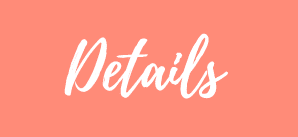Habits are useful. They allow us to save time. There’s no effort, no energy, no willpower involved so habits free up the brain to think, to have insights or to be inspired! Habits also mean that we can avoid making decisions. If the brain has to make too many decisions, it rebels by feeling tired because it’s working overtime so it’s happy to delegate some of this decision-making to other neural pathways that take care of your habits. Research shows us that habits can replace memory, so habits work at a profound level and this is why they’re so difficult to change.
Think of it, if habits didn’t exist it would be really difficult to back your car out of your driveway. If you’ve got a car and a driveway, think of how little effort you put into reversing out into the street in the morning. I’m sure that most of the time you’re half asleep! If you had to think of how to open the car door, how to attach the seatbelt, how to put the gears into reverse, how to gently press on the accelerator… you get my drift? You’d be exhausted before the end of your driveway! So our brain is happy to delegate this job to habit, freeing it up for much more exciting things.
When we think of habits, we tend to only think of the ones we want to change. So can I just stress the importance of choosing the habits you want to cultivate? I would like to encourage you to think of how you want to go through your day. How could habits help you? What healthy or useful habits could you develop? I’m inviting you to make a conscious choice. You’re going to make a choice either way so it might as well be one that serves you and not just one that you accidentally fell into.
It’s so much easier to develop new habits than it is to get rid of old ones. Our old habits feel comfortable. We’re used to them and new ones feel odd. If you want to change your habits, you have to be willing to be a bit uncomfortable. What can stop us from changing our habits is our environment, people or circumstances, so if you’re trying to change your habits, it’s vital to pay attention to this. Are people you’re close to going to support you? Can you enlist their help? Or are they going to sabotage you by putting temptation in your way? If you want to develop the habit of exercising when back from work, make sure to have your exercise gear ready to slip into without any major hassle. Have a meal prepared for you and your family that doesn’t involve a lot of energy or time, freeing up time for you to exercise. If you don’t make the space for your habits, they won’t grow! Don’t leave anything to chance.
Once you’ve started to change your habits, people around you might notice. They might not like what they’re noticing, not because your new habits are bad for you but because they make them think that they should be doing something about their bad habits too. Be aware that when you start changing, people around you won’t automatically change with you. They might want to go on just as usual and resent you for pointing a finger at their undesirable habits. Some people, instead of seeing you as an inspiration for them to change, will choose to see you as a threat! It sounds silly, but it can be very intimidating to see people transform in front of your eyes, so to speak. Just remind yourself that if they make snide remarks, it’s just their fear you’re hearing. It has got nothing to do with you, but everything to do with them.
But with time, new habits become old ones but for that to happen you have to persist! It’s also worth your while to think of replacing a habit instead of discarding it. Replacing a habit is easier than getting rid of one totally.
I often read that it only takes 21 days to form a new habit. This erroneous information comes from a book where the surgeon noticed that patients who’d had plastic surgery on their faces took 21 days to become familiar with their “new” faces. But in this example, there was no choice involved, whereas in real life there often is. To illustrate this, I could say that it would be really easy to lose weight if you could only buy vegetables in the stores! It would be really easy to stop smoking if all the tobacco companies went out of business!
There is no proven method for breaking a habit fast. If it’s a habit you’ve had for a long time, it’ll probably take longer to break it than if it was new. Some people change habits really easily and others need a lot of time. Research at University College London shows us that the average time for people to change a habit is 66 days. After 66 days, your new habit becomes automatic. It might take longer for you. Or you might take shorter! Persistence is key!
When you’re developing a new habit, try to focus on the positive side. It’s important to stay motivated. Willpower is a good thing that can also be developed, but make sure that all of you, mind, body and soul, agree on the benefits of this new habit. You’ll be embracing new things, but you’ll also be saying goodbye to others. This can be extremely difficult and scary for your subconscious. If you’re used to drinking 4 sodas a day, it’s going to feel REALLY uncomfortable not to drink any at all! That’s why I would advise you to start with just cutting down on your consumption. If not, you might scare your subconscious who’ll then do everything possible to sabotage your success! Check in with your subconscious, try to persuade it by journaling about the benefits of your new habit. How will your life improve? Make sure it includes some delicious feelings for your subconscious to feel. Feelings are its language. When journaling, you’ll have the two parts of your brain communicate, the rational and the irrational sides. When they’re working together, success is just around the corner!
So this is what science tells us about habit breaking:
MIT researchers have discovered something they call a Habit Replacement Loop. I’ll just call it the Habit Loop because it exists whether you want to replace your habit or not. It comprises
- A cue
- A routine
- A reward
When you want to change a habit, you need to pinpoint it, identify it, and the easiest way of identifying something and staying focused on it is by writing it down. Take the time NOW to name the habit you want to change and write it down! When putting a name on something, you’re explaining it to your rational mind. Think of it this way: if I say “tree”, you might have a different tree in mind than me! You could be thinking of an oak tree and I of a pine tree. If I say Christmas tree, we’re more likely to be thinking of the same thing. It’s the same with your logical mind. If your thoughts stay vague, how do you expect it to pick up on them?
When you name your habit, you’re identifying the routine. Let’s take snacking as an example. This is the habit you’re trying to change.
Routine: snacking
But before your habit of snacking kicks in, there has been a cue. We’re often totally unaware of what that is. You think that you snack because you’re hungry, because you’ve got low blood sugar, but the cue might actually be something totally different. It could be boredom, sadness, need of a distraction or need of company. The only way to find out is by being a bit systematic about it and tracking yourself.
Isolating the cue can prove quite difficult because usually, there’s too much information! Take my example from earlier with the car and the driveway. Imagine you’re out of the driveway and driving your children to school. You let your habit guide you. After all, you’ve done this hundreds of times, no need to stay mindful or focused on the task. Suddenly however you find yourself taking a left turn instead of a right turn and you find yourself on the road to your work! This wasn’t your intention. So what happened? What triggered this confusion between two habits, taking the road to school or taking the road to work? Was it a tree you saw, a thought, a radio programme you listened to that made you confuse the two habits? There’s probably too much information for you to be able to see clearly. That’s why we need to apply a method.
Research shows that almost all cues for habits fit into these categories:
- Location
- Time
- Emotional State
- Other People
- Action before urge to indulge in habit
To identify the cue that makes you feel the urge to indulge in the habit you want to change, you write down an answer to all these categories.
Let’s take my example from earlier: snacking. Let’s say you find yourself snacking at work. This is what you could write down:
- Location: office
- Time: 4 o’clock in the afternoon
- Emotional State: stressed out
- Other People: nobody around
- Action before urge to snack: answering emails
This is vital habit changing data! Do this note-taking exercise over time, not just one time. When you compare the answers to these categories over a week, you’ll see a pattern leap out. Once you’ve got a clear idea of the pattern, you can start implementing changes! Time and location are sometimes easy to identify, but how many people take the time to become aware of their emotional state? How many people notice who’s around?
In my example, if you always find that the urge to snack comes at 4PM, in the office, when answering emails that make you feel stressed out and with nobody around to relieve that stress, it’s so much easier to start operating changes. You can’t escape the office and you can’t change the time because at some point in the day, it’s going to be 4 o’clock, but have you thought about answering your emails just before lunch? If you experiment with this, you might find that the stress brought on by the emails isn’t a problem if it occurs just before lunch or at some other point during the day. You might not feel stressed out if you’re surrounded by other people. These are all vital clues to your habit changing project.
I mentioned “reward” earlier as being part of the Habit Loop. The obvious reward for snacking is the snack, the cookie, the sweet, the chips… but is this really what you’re craving? Rewards are so powerful because they satisfy cravings (and there’s no arguing with cravings, is there?). You must satisfy them… or feel frustrated! And who likes feeling frustrated? This is why I said that changing your habits will inevitably make you feel a bit uncomfortable, but it needn’t be hugely so. Read on!
Most cravings are obvious in retrospect but incredibly hard to pinpoint when you’re under their sway. To isolate a craving, that is the reward, you need to experiment. You can think of yourself as a detective, as a scientist, on the lookout for signs. To keep the example from earlier (snacking) when you feel the urge to snack come on, choose a different reward. This could feel uncomfortable but try to experiment. Instead of heading for the fridge, why don’t you try to go out for a walk? Why don’t you call a friend? Have a healthy snack instead of an unhealthy one?
The idea is that you experiment with different rewards so that you can pinpoint the craving. If going for a walk makes the craving go away, it means that snacking wasn’t the real reward. It could be a change of scenery, a distraction.
Take your time! Don’t expect to change your habit while you’re experimenting. What you do to change your reward is not important. So far, you’ve only identified elements of your habit, you haven’t actually started changing it!
Once you’ve identified the Habit Loop (the cue, the routine, the reward) you know what triggers your habit, or shall I say your craving? To start changing it, you need to put a plan in place that will make you engage in a different behaviour than the one dictated by your habit. In my example above, I suggested replacing snacking with a distraction or some social interaction.
If you want to stop snacking, you need to set a timer to ring just before the habit will set in! Remember all the detective work you’ve been doing! In the above example that means setting a timer at 3.45 because normally you’ll be feeling like snacking at 4 o’clock. You’ll then have a plan in place that’ll avoid your feeling the craving for your snack! You’ll have thought of a substitute behaviour that will replace snacking. So instead of resisting the craving, you’ll be be having fun trying out new things as a reward! You no longer have to rely solely on willpower because you’ve bypassed the craving by never getting into the situation that provokes it!
When the timer goes off, if your substitute behaviour or plan is going for a walk, go for your walk. If it’s chatting with somebody, do that. If your blood sugar is low, have a healthy snack, all the while reminding yourself to eat something for lunch tomorrow that won’t make your blood sugar crash in the afternoon!
When back at your office desk, write down the 3 first things that come to mind. They could be emotions, thoughts, images, concrete things. This will force awareness of thoughts and feelings. Remember awareness is the first step in making changes! Then set an alarm after 15 minutes. Why? Because if you changed the reward to an apple instead of a cookie and you still crave your cookie, then your craving is not triggered by low blood sugar or hunger. If after chatting to somebody and you still crave your cookie, it’s not the socializing you’re craving.
If however after talking to colleagues you no longer feel like snacking, you’ve identified the underlying craving that’s triggering your behaviour or habit, and you can now do something to change it! That’s why experimenting is so useful: you identify your real craving (which might not be the one that you thought it was).
Keeping the Habit Loop in mind when trying to change your habits can make all the difference! Instead of just telling yourself that sheer determination and willpower will see you through, you can adopt a more scientific approach that will make success so much more likely. To stay motivated, you can keep track of your success! Journal about it! Congratulate yourself! Celebrate! There’s nothing like celebration to keep your subconscious engaged and willing to pull its weight!
In the Self-Love Activation Course, we craft habits that support the gorgeous being that you are. You’ll learn to identify and make the changes that serve you. Find out more here: https://katrinehorn.com/self-love/
Looking for Private Coaching? You’re in the right place. I’d love to hear more about you. Please drop me a line via the contact form or feel free to join my waitlist here.
About the author:
Katrine Horn is a speaker and life coach who guides women to create the life of their dreams, to recognize their intrinsic value and release the illusion that life is a struggle. Katrine teaches women how to manage their emotions leaving them free to embrace opportunity when it comes their way. She helps them enter their Zone of Excellence where there are able to step aside to allow their highest good to find them.
Join the Choosing Happiness FB group: https://www.facebook.com/groups/ChoosingHappiness/


